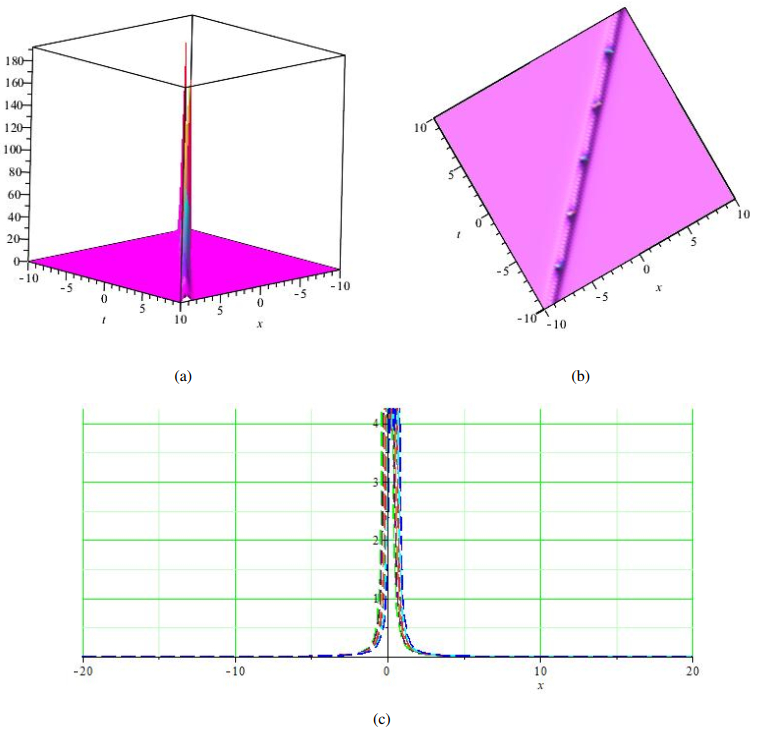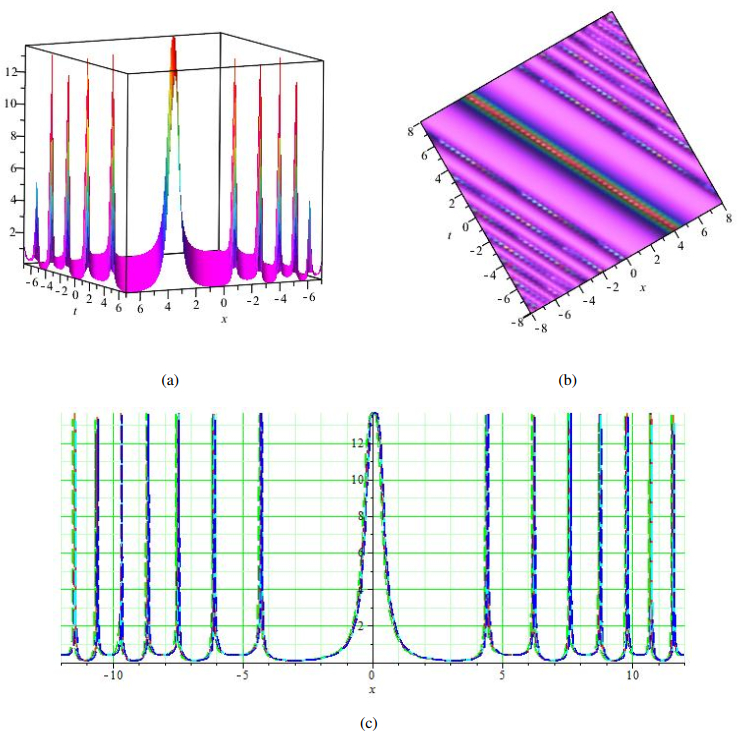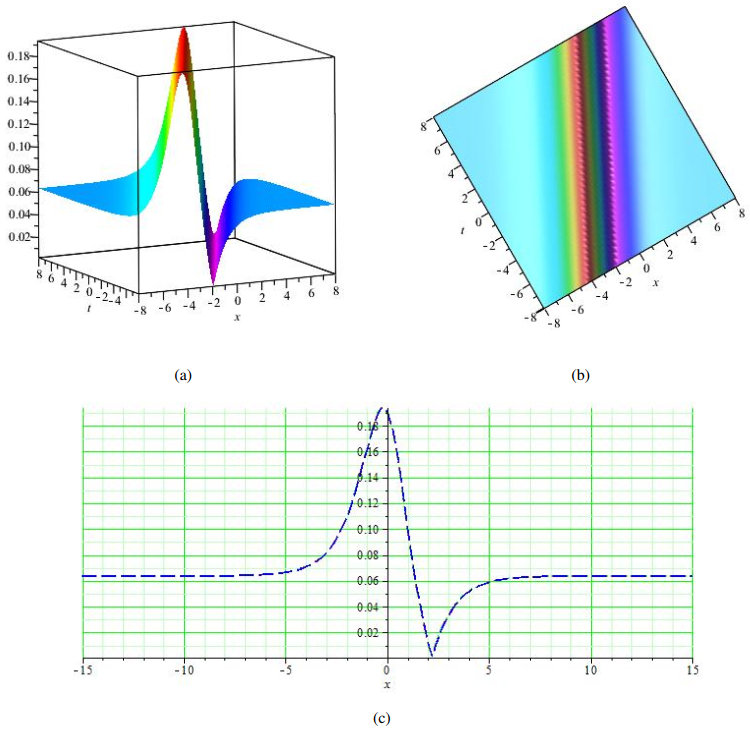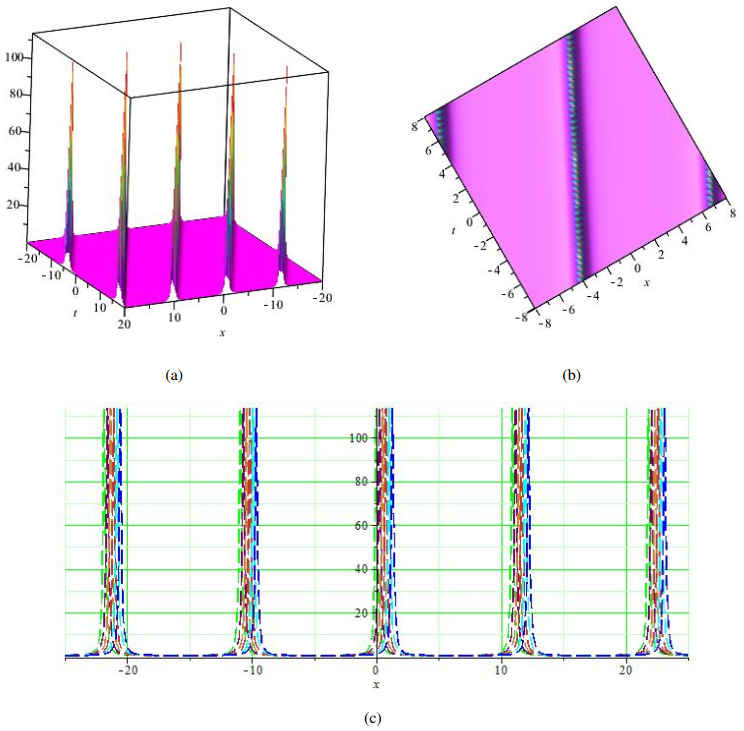| 1.
|
Gulaly Sadiq, Amir Ali, Shabir Ahmad, Kamsing Nonlaopon, Ali Akgül,
Bright Soliton Behaviours of Fractal Fractional Nonlinear Good Boussinesq Equation with Nonsingular Kernels,
2022,
14,
2073-8994,
2113,
10.3390/sym14102113
|
|
| 2.
|
Hamood Ur Rehman, Mustafa Inc, Muhammad Imran Asjad, Azka Habib, Qamar Munir,
New soliton solutions for the space-time fractional modified third order Korteweg–de Vries equation,
2022,
24680133,
10.1016/j.joes.2022.05.032
|
|
| 3.
|
Hamood ur Rehman, Aziz Ullah Awan, Azka Habib, Fehmi Gamaoun, ElSayed M. Tag El Din, Ahmed M. Galal,
Solitary wave solutions for a strain wave equation in a microstructured solid,
2022,
39,
22113797,
105755,
10.1016/j.rinp.2022.105755
|
|
| 4.
|
Muhammad Imran Asjad, Mustafa Inc, Ifrah Iqbal,
Exact solutions for new coupled Konno–Oono equation via Sardar subequation method,
2022,
54,
0306-8919,
10.1007/s11082-022-04208-3
|
|
| 5.
|
Kang-Jia Wang,
Diverse soliton solutions to the Fokas system via the Cole-Hopf transformation,
2023,
272,
00304026,
170250,
10.1016/j.ijleo.2022.170250
|
|
| 6.
|
Hamood Ur Rehman, Aziz Ullah Awan, Seham Ayesh Allahyani, ElSayed M. Tag-ElDin, Muhammad Ahsan Binyamin, Sadia Yasin,
Exact solution of paraxial wave dynamical model with Kerr Media by using ϕ6 model expansion technique,
2022,
42,
22113797,
105975,
10.1016/j.rinp.2022.105975
|
|
| 7.
|
Muhammad Zafarullah Baber, Nauman Ahmed, Muhammad Waqas Yasin, Muhammad Sajid Iqbal, Ali Akgül, Muhammad Bilal Riaz, Muhammad Rafiq, Ali Raza,
Comparative analysis of numerical with optical soliton solutions of stochastic Gross–Pitaevskii equation in dispersive media,
2023,
44,
22113797,
106175,
10.1016/j.rinp.2022.106175
|
|
| 8.
|
Aqilah Aljuaidan, Mamdouh Elbrolosy, Adel Elmandouh,
Nonlinear Wave Propagation for a Strain Wave Equation of a Flexible Rod with Finite Deformation,
2023,
15,
2073-8994,
650,
10.3390/sym15030650
|
|
| 9.
|
Kang-Jia Wang, Jing Si, Jing-Hua Liu,
Diverse optical soliton solutions to the Kundu-Mukherjee-Naskar equation via two novel techniques,
2023,
273,
00304026,
170403,
10.1016/j.ijleo.2022.170403
|
|
| 10.
|
Shao-Wen Yao, Selahattin Gulsen, M.S. Hashemi, Mustafa Inc, Harun Bicer,
Periodic Hunter–Saxton equation parametrized by the speed of the Galilean frame: Its new solutions, Nucci’s reduction, first integrals and Lie symmetry reduction,
2023,
22113797,
106370,
10.1016/j.rinp.2023.106370
|
|
| 11.
|
Tahira Sumbal Shaikh, Muhammad Zafarullah Baber, Nauman Ahmed, Muhammad Sajid Iqbal, Ali Akgül, Sayed M. El Din,
Investigation of solitary wave structures for the stochastic Nizhnik–Novikov–Veselov (SNNV) system,
2023,
48,
22113797,
106389,
10.1016/j.rinp.2023.106389
|
|
| 12.
|
Waqas Ali Faridi, Muhammad Abu Bakar, Zhaidary Myrzakulova, Ratbay Myrzakulov, Mawahib Elamin, Lakhdar Ragoub, Lanre Akinyemi,
The Construction of Analytical Exact Soliton Waves of Kuralay Equation,
2024,
18,
2300-5319,
603,
10.2478/ama-2024-0064
|
|
| 13.
|
Hassan Eltayeb, Said Mesloub,
A Note on the Application of the Double Sumudu–Generalized Laplace Decomposition Method and 1+1- and 2+1-Dimensional Time-Fractional Boussinesq Equations,
2024,
16,
2073-8994,
665,
10.3390/sym16060665
|
|
| 14.
|
Kang-Jia Wang, Feng Shi, Peng Xu,
Multiple soliton, soliton molecules and the other diverse wave solutions to the (2+1)-dimensional Kadomtsev–Petviashvili equation,
2024,
38,
0217-9849,
10.1142/S0217984924502592
|
|
| 15.
|
Rajesh Kumar Gupta, Vikash Yadav,
On weakly nonlinear electron-acoustic waves in the fluid ions, bifurcation analysis, generalized symmetries and series solution propagated via Biswas–Milovic equation,
2023,
55,
0306-8919,
10.1007/s11082-023-04925-3
|
|
| 16.
|
Asghar Ali, Jamshad Ahmad, Sara Javed, Shafqat-Ur- Rehman,
Analysis of chaotic structures, bifurcation and soliton solutions to fractional Boussinesq model,
2023,
98,
0031-8949,
075217,
10.1088/1402-4896/acdcee
|
|
| 17.
|
Khalid K. Ali, M. S. Mehanna, Mohamed S. Mohamed,
Optical soliton solutions for Kudryashov’s quintuple power-law coupled with dual form of non-local refractive index,
2023,
55,
0306-8919,
10.1007/s11082-023-05512-2
|
|
| 18.
|
Nazek Alessa, Muhammad Shoaib Saleem, Hamood Ur Rehman, Sidra Noreen,
Nonlinear wave dynamics in ferromagnetic media: A study with the Kuralay-IIA equation,
2024,
0217-9849,
10.1142/S0217984925500356
|
|
| 19.
|
Hamood Ur Rehman, Sadia Yasin, Ifrah Iqbal,
Optical soliton for (2+1)-dimensional coupled integrable NLSE using Sardar-subequation method,
2024,
38,
0217-9849,
10.1142/S0217984924500441
|
|
| 20.
|
Tayyaba younas, Jamshad Ahmad,
Dynamical behavior of the higher-order cubic-quintic nonlinear Schrödinger equation with stability analysis,
2024,
0972-8821,
10.1007/s12596-024-01864-4
|
|
| 21.
|
Mashael M. ALBaidani, Umair Ali, Abdul Hamid Ganie,
The closed-form solution by the exponential rational function method for the nonlinear variable-order fractional differential equations,
2024,
12,
2296-424X,
10.3389/fphy.2024.1347636
|
|
| 22.
|
Hamood Ur Rehman, Aziz Ullah Awan, Sayed M. Eldin, Ifrah Iqbal,
Study of optical stochastic solitons of Biswas-Arshed equation with multiplicative noise,
2023,
8,
2473-6988,
21606,
10.3934/math.20231101
|
|
| 23.
|
Renfei Luo, Homan Emadifar, Mati ur Rahman,
Bifurcations, chaotic dynamics, sensitivity analysis and some novel optical solitons of the perturbed non-linear Schrödinger equation with Kerr law non-linearity,
2023,
54,
22113797,
107133,
10.1016/j.rinp.2023.107133
|
|
| 24.
|
Mi Chen, Zhen Wang,
Analytical three-periodic solution and interaction for nonlocal Boussinesq equation,
2023,
138,
2190-5444,
10.1140/epjp/s13360-023-04518-9
|
|
| 25.
|
Ifrah Iqbal, Hamood Ur Rehman, Mohammad Mirzazadeh, Mir Sajjad Hashemi,
Retrieval of optical solitons for nonlinear models with Kudryashov’s quintuple power law and dual-form nonlocal nonlinearity,
2023,
55,
0306-8919,
10.1007/s11082-023-04866-x
|
|
| 26.
|
Khadija Shakeel, Alina Alb Lupas, Muhammad Abbas, Pshtiwan Othman Mohammed, Farah Aini Abdullah, Mohamed Abdelwahed,
Construction of Soliton Solutions of Time-Fractional Caudrey–Dodd–Gibbon–Sawada–Kotera Equation with Painlevé Analysis in Plasma Physics,
2024,
16,
2073-8994,
824,
10.3390/sym16070824
|
|
| 27.
|
Jamshad Ahmad, Tayyaba Younas,
Dynamical behavior of soliton solutions to the fractional phi-four model via two analytical techniques,
2024,
38,
0217-9849,
10.1142/S021798492450310X
|
|
| 28.
|
Jamshad Ahmad, Tayyaba Younas,
Wave structures of the (3+1)-dimensional nonlinear extended quantum Zakharov–Kuznetsov equation: analytical insights utilizing two high impact methods,
2024,
56,
1572-817X,
10.1007/s11082-024-06691-2
|
|
| 29.
|
Kang-Jia Wang, Guo-Dong Wang, Feng Shi,
Nonlinear dynamics of soliton molecules, hybrid interactions and other wave solutions for the (3+1)-dimensional generalized Kadomtsev–Petviashvili–Boussinesq equation,
2024,
38,
0217-9849,
10.1142/S021798492450194X
|
|
| 30.
|
Muhammad Shakeel, Xinge Liu, Almetwally M. Mostafa, Salman A. AlQahtani, Nouf F. AlQahtani, Mohamed R. Ali,
Exploring of soliton solutions in optical metamaterials with parabolic law of nonlinearity,
2024,
56,
1572-817X,
10.1007/s11082-024-06452-1
|
|
| 31.
|
Sidra Ghazanfar, Nauman Ahmed, Muhammad Sajid Iqbal, Syed Mansoor Ali, Ali Akgül, Shah Muhammad, Mubasher Ali, Murad Khan Hassani,
Analysis of multi-wave solitary solutions of (2+1)-dimensional coupled system of Boiti–Leon–Pempinelli,
2024,
14,
2045-2322,
10.1038/s41598-024-67698-z
|
|
| 32.
|
Hamood Ur Rehman, Rehan Akber, Abdul-Majid Wazwaz, Hashim M. Alshehri, M.S. Osman,
Analysis of Brownian motion in stochastic Schrödinger wave equation using Sardar sub-equation method,
2023,
289,
00304026,
171305,
10.1016/j.ijleo.2023.171305
|
|
| 33.
|
Hamood Ur Rehman, Ghada S. Said, Aamna Amer, Hameed Ashraf, M.M. Tharwat, Mahmoud Abdel-Aty, Nasser S. Elazab, M.S. Osman,
Unraveling the (4+1)-dimensional Davey-Stewartson-Kadomtsev-Petviashvili equation: Exploring soliton solutions via multiple techniques,
2024,
90,
11100168,
17,
10.1016/j.aej.2024.01.058
|
|
| 34.
|
Dean Chou, Hamood Ur Rehman, Aamna Amer, Aatika Amer,
New solitary wave solutions of generalized fractional Tzitzéica-type evolution equations using Sardar sub-equation method,
2023,
55,
0306-8919,
10.1007/s11082-023-05425-0
|
|
| 35.
|
Karim K. Ahmed, Hamdy M. Ahmed, Wafaa B. Rabie, Mohammed F. Shehab,
Effect of noise on wave solitons for (3+1)-dimensional nonlinear Schrödinger equation in optical fiber,
2024,
0973-1458,
10.1007/s12648-024-03222-3
|
|
| 36.
|
Kang-Jia Wang, Manuel De León,
The Perturbed Chen–Lee–Liu Equation: Diverse Optical Soliton Solutions and Other Wave Solutions,
2024,
2024,
1687-9120,
10.1155/2024/4990396
|
|
| 37.
|
Anwar Ja’afar Mohamad Jawad, Anjan Biswas, Yakup Yildirim, Ali Saleh Alshomrani,
Highly dispersive optical solitons with generalized quadratic—cubic form of self—phase modulation by Sardar sub—equation scheme,
2024,
0972-8821,
10.1007/s12596-024-01848-4
|
|
| 38.
|
Kang-Jia Wang,
Resonant multiple wave, periodic wave and interaction solutions of the new extended (3 + 1)-dimensional Boiti-Leon-Manna-Pempinelli equation,
2023,
111,
0924-090X,
16427,
10.1007/s11071-023-08699-x
|
|
| 39.
|
Mohammed F. Shehab, Mohamed M.A. El-Sheikh, Hamdy M. Ahmed, A.A. El-Gaber, Soliman Alkhatib,
Effects of Wiener process on analytical wave solutions for (3+1) dimensional nonlinear Schrödinger equation using modified extended mapping method,
2024,
56,
22113797,
107297,
10.1016/j.rinp.2023.107297
|
|
| 40.
|
Sibel Tarla, Karmina K Ali, Abdullahi Yusuf,
Retracted: Exploring new optical solutions for nonlinear Hamiltonian amplitude equation via two integration schemes,
2023,
98,
0031-8949,
095218,
10.1088/1402-4896/aceb40
|
|
| 41.
|
Karmina K. Ali, Abdullahi Yusuf,
Soliton waves with optical solutions to the three-component coupled nonlinear Schrödinger equation,
2024,
39,
0217-7323,
10.1142/S0217732324500688
|
|
| 42.
|
Muhammad Ishfaq Khan, Aamir Farooq, Kottakkaran Sooppy Nisar, Nehad Ali Shah,
Unveiling new exact solutions of the unstable nonlinear Schrödinger equation using the improved modified Sardar sub-equation method,
2024,
59,
22113797,
107593,
10.1016/j.rinp.2024.107593
|
|
| 43.
|
Kang-Jia Wang, Feng Shi, Jing-Hua Liu,
Soliton molecules and the novel hybrid interaction solutions of the new extended (3 + 1)-dimensional Boiti–Leon–Manna–Pempinelli equation,
2024,
98,
0973-7111,
10.1007/s12043-024-02747-w
|
|
| 44.
|
Khalid K. Ali, Salman A. AlQahtani, M. S. Mehanna, Ahmet Bekir,
New optical soliton solutions for the (2+1) Fokas system via three techniques,
2023,
55,
0306-8919,
10.1007/s11082-023-04900-y
|
|
| 45.
|
Chanidaporn Pleumpreedaporn, Elvin J. Moore, Sekson Sirisubtawee, Nattawut Khansai, Songkran Pleumpreedaporn,
Exact Solutions for the Sharma–Tasso–Olver Equation via the Sardar Subequation Method with a Comparison between Atangana Space–Time Beta-Derivatives and Classical Derivatives,
2024,
12,
2227-7390,
2155,
10.3390/math12142155
|
|
| 46.
|
Sibel Tarla, Karmina K. Ali, Hatıra Günerhan,
Optical soliton solutions of generalized Pochammer Chree equation,
2024,
56,
1572-817X,
10.1007/s11082-024-06711-1
|
|
| 47.
|
Rajib Mia, Arjun Kumar Paul,
New exact solutions to the generalized shallow water wave equation,
2024,
38,
0217-9849,
10.1142/S0217984924503019
|
|
| 48.
|
PENG XU, HUAN HUANG, HUI LIU,
SEMI-DOMAIN SOLUTIONS TO THE FRACTAL (3+1)-DIMENSIONAL JIMBO–MIWA EQUATION,
2024,
32,
0218-348X,
10.1142/S0218348X24400425
|
|
| 49.
|
Kang-Jia Wang, Feng Shi,
Non-singular complexiton, singular complexiton and complex N-soliton solutions of the new extended (3+1)-dimensional Boiti-Leon-Manna-Pempinelli equation,
2024,
99,
0031-8949,
035251,
10.1088/1402-4896/ad2966
|
|
| 50.
|
Hira Tariq, Hira Ashraf, Hadi Rezazadeh, Ulviye Demirbilek,
Travelling wave solutions of nonlinear conformable Bogoyavlenskii equations via two powerful analytical approaches,
2024,
39,
1005-1031,
502,
10.1007/s11766-024-5030-7
|
|
| 51.
|
Waqas Ali Faridi, Muhammad Abu Bakar, Zhaidary Myrzakulova, Ratbay Myrzakulov, Ali Akgül, Sayed M. El Din,
The formation of solitary wave solutions and their propagation for Kuralay equation,
2023,
52,
22113797,
106774,
10.1016/j.rinp.2023.106774
|
|
| 52.
|
Yan-Nan Chen, Kang-Jia Wang,
On the Wave Structures to the (3+1)-Dimensional Boiti–Leon–Manna–Pempinelli Equation in Incompressible Fluid,
2023,
12,
2075-1680,
519,
10.3390/axioms12060519
|
|
| 53.
|
Manar S. Ahmed, Ahmed H. Arnous, Khaled A. Gepreel, Aydin Secer,
Analyzing the influence of multiplicative white noise on optical solitons in birefringent fibers through the perturbed Gerdjikov–Ivanov model,
2024,
56,
1572-817X,
10.1007/s11082-024-07329-z
|
|
| 54.
|
Mehmet Şenol, Mehmet Gençyiğit, Ulviye Demirbilek, Emad A. Az-Zo’bi,
Sensitivity and wave propagation analysis of the time-fractional (3+1)-dimensional shallow water waves model,
2024,
75,
0044-2275,
10.1007/s00033-024-02216-9
|
|
| 55.
|
Tariq Alraqad, Muntasir Suhail, Hicham Saber, Khaled Aldwoah, Nidal Eljaneid, Amer Alsulami, Blgys Muflh,
Investigating the Dynamics of a Unidirectional Wave Model: Soliton Solutions, Bifurcation, and Chaos Analysis,
2024,
8,
2504-3110,
672,
10.3390/fractalfract8110672
|
|
| 56.
|
Muhammad Zain Yousaf, Muhammad Abbas, Muhammad Kashif Iqbal, Imen Ali Kallel,
Adequate dynamical perspective of traveling wave solutions to the perturbed Boussinesq equation appearing in ocean engineering,
2024,
2198-6444,
10.1007/s40722-024-00359-5
|
|
| 57.
|
Zeting Li, Ben Gao,
Investigation for the exact solutions of two classes of extended Sakovich equations,
2025,
533,
03759601,
130203,
10.1016/j.physleta.2024.130203
|
|
| 58.
|
Mingyue Wang, Youhe Zhou, Jizeng Wang,
New exact traveling wave solutions of the coupled Boussinesq equations,
2025,
20950349,
100568,
10.1016/j.taml.2024.100568
|
|
| 59.
|
Kang-Jia Wang, Xiao-Lian Liu, Feng Shi, Geng Li,
Bifurcation and sensitivity analysis, chaotic behaviors, variational principle, Hamiltonian and diverse wave solutions of the new extended integrable Kadomtsev–Petviashvili equation,
2025,
03759601,
130246,
10.1016/j.physleta.2025.130246
|
|
| 60.
|
Kang‐Jia Wang, Bo‐Rong Zou, Hong‐Wei Zhu, Shuai Li, Geng Li,
Phase Portrait, Bifurcation and Chaotic Analysis, Variational Principle, Hamiltonian, Novel Solitary, and Periodic Wave Solutions of the New Extended Korteweg–de Vries–Type Equation,
2025,
0170-4214,
10.1002/mma.10852
|
|
| 61.
|
Sibel Tarla, Karmina K. Ali, Abdullahi Yusuf, Berna Uzun, Soheil Salahshour,
Exact solutions of the (2+1)-dimensional Konopelchenko–Dubrovsky system using Sardar sub-equation method,
2025,
39,
0217-9849,
10.1142/S0217984924504852
|
|
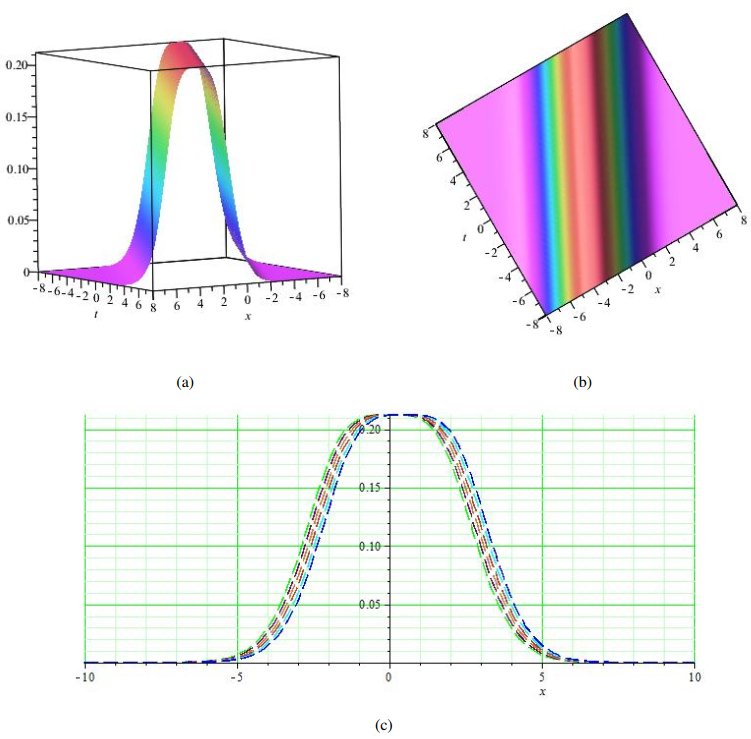









 DownLoad:
DownLoad:
